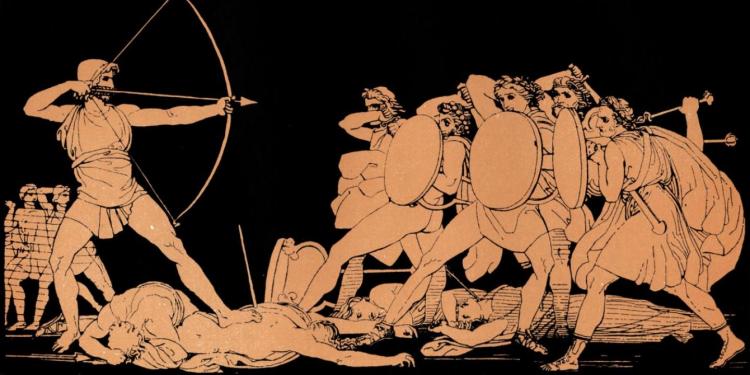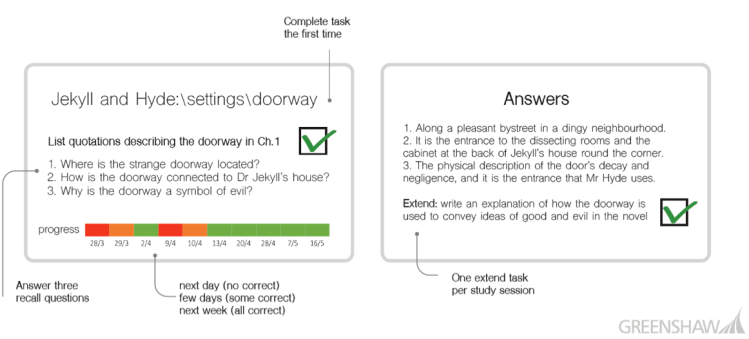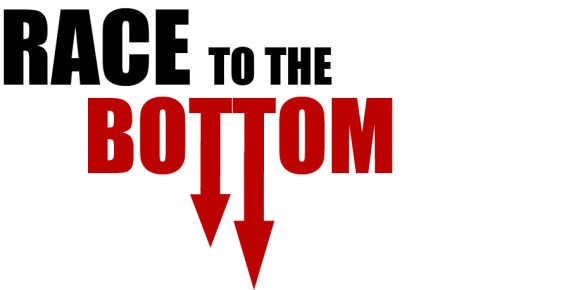
If students studied The Odyssey in year 7…
They would learn about the incredible story of the Trojan War and understand the meaning behind a number of idiomatic phrases, such as ‘the face that launched a thousand ships’, ‘between a rock and a hard place’ and ‘beware Greeks bearing gifts.’
The names of Greek and Trojan heroes – Achilles, Menelaus, Agamemnon, Hector and, of course, Odysseus himself – would become familiar to them, as would their stories of glory and suffering.
Through the tales of Penelope, Clytemnestra and Helen, students would learn about gender inequality in the Classical world, which could then be critiqued, perhaps referring to the wealth of contemporary literature that writes back to these myths from different perspectives and viewpoints.
Learning about the lives of the immortals would be a must. The founding of Olympus, the battle with the Titans and the creation stories of some of the gods could all be covered. The nature of myth itself could be explored, so that students start to conceptualise the way human beings make sense of their world through narrative.
It would be a chance to study art of the Mycenaean period and for students to learn about the different periods of Greek Civilisation. Discussions could develop an understanding of the nature of civilisation, exploring Odysseus’s questionable actions and his treatment of his men.
Students would learn about the oral tradition of passing on stories from one generation to the next through bards like Homer. There would be the chance to establish the connection between the lyre and the lyric poem – a cornerstone of their poetry studies in later years.
Language exploration would be rich and plentiful. The grammatical and semantic roots of ideas like democracy, xenophobia and polytheism would all have concrete examples to aid their understanding and link antiquity to the modern world.
There would be the chance to introduce etymology and to show how contemporary society often draws upon the distant past to define itself through borrowing names like Hermes for lightening service, Nectar for heavenly benefits, and Ambrosia for foods of the gods, for instance.
The opportunity to look at the grammatical structures of epithets would be interesting and fun, as well as helping to explain how poets retained such a wealth of information in their own heads using recurring patterns of rhythm and rhyme. Comparisons to our digital world would be necessary.
Students would learn epic poetry and what it meant to be a hero in the Classical world – about the importance of attaining lasting fame (Kleos) through action (Achilles) or cleverness (Odysseus). An understanding of epic and heroism would underpin much of the wider curriculum and be a thread that is returned to in different time periods.
If students, then, studied Shakespeare’s Sonnets in year 8…
They would begin by learning about Petrarch and his love for Laura. They would be introduced to the tricky idea of idealised love and begin to see how yearning for something beyond your grasp is very different from the modern world’s desire for instant gratification.
By reading about Petrarch’s Canzoniere students could begin to understand that as well as working as individual pieces, poems can also function together as part of a wider narrative. A difficult concept for students to grasp who tend to only get fed artificial anthologies put together for exams!
At this stage the basic stylistic and thematic concerns of sonnets could be introduced – how 14 lines is just about the right length to develop an idea from start to finish and how the form represents something of a literary challenge that all the major poets tend to have a go at it.
Students would be introduced to the notion of an argument (as distinct from disagreement) and be able to understand the connection between the desired beloved and the yearning lover.
There would be an opportunity to develop an overview of the Elizabethan timeline and how minor poets – Sir Thomas Wyatt and the Earl of Surrey – imported the Italian form into English, making changes to reflect the lack of as many rhymes in English as in Italian.
By the time they got to Shakespeare’s sonnets, students would know a little bit about how and why Shakespeare wrote poetry during times of plague. The idea of patrons and the need to make money (Shakespeare was not an aristocrat) might surprise them and bring him a little closer to their lives.
Students would develop an understanding of the way Shakespeare popularised the form, and by concentrating mostly on the use of rhyme schemes and structures (quatrains, octaves, sestets and couplets) they would gain confidence and mastery that could be built upon later on.
Stories about the Beautiful youth and the Dark Lady would capture attention, as would the change of pronoun from masculine to feminine in the Victorian Age. Discussions about male desire would be rich and there would be a chance to contrast with male relationships in the past and present
Focusing on just a handful of poems would help students to see structural features at work. It would provide the chance to learn poetry off by heart – at first daunting and alien, and perhaps not really something that is part of their world, but then exciting and contagious with practice.
The difference in confidence and understanding would be palpable and inspiring.
The couplet in ‘Sonnet 18’ could be poured over. Students would be surprised by the power of art to preserve a life this way. They would make connections to the Greek concept of Kleos, and see how different generations wrestle with the same enduring questions about life and death.
If students, then, studied WW1 poetry and Journey’s End in year 9…
There would be a great opportunity for students to thread together the ideas and themes explored in previous years but in a time period more recognisable.
They could extend their conceptual understanding of literature through exploring the relationship between art and politics, contrasting the early jingoistic poetry of Rupert Brooke and Jesse Pope with the later trench poetry of Wilfred Owen and Siegfried Sassoon.
Students would be well placed to appreciate why those largely public school boys who enlisted early on, filled with images of Achilles and Classical heroism, thought it would be possible to be heroes and obtain glory and honour of their own. They could then reflect on what it means to be a hero.
The sonnet would make a return, but this time in the context of the bloody battlefields of France. Students could contrast the tradition of idealised romantic love with the reality of homoerotic bonds between brothers. They would see how the genre (and genres in general) bend and flex at the hands of the writers and the circumstances they are writing in.
Studying Journey’s End would provide an even starker contrast between the Flanders’ mud and the battlefields of Troy. The notion of aristeia would seem laughable in the face of the ‘the monstrous anger of the guns’ and ‘the stuttering rifles’ rapid rattle’.
Students would learn about a different kind of play to reflect a different kind of war. Satire as a genre would enter students’ vocabulary, which would help them understand that this was not a war where the sword (or even the bullet) killed as much as the boredom, the waiting and the rats.
This would be an opportunity to explore ideas of class and make connections to wider social and cultural changes taking place then and now. It would make sense to learn about the women’s movement and to appreciate what we mean by context – how art both reflected and shaped changes in societal structures and gender roles.
Links back to the Classical World and to Shakespeare would be possible too, as would looking forward to the more demotic, plural society we live in today.
Students would see a world that did not have the means to express itself – trauma couched as neuralgia; silence seen as stoicism – so it had to invent new ways. They would see how over the years the notion of male heroism had completely transformed along with the role of the poet, whose brief was no longer celebrating, keeping alive but simply to warn.
They would understand why Owen believed that ‘true Poets must be truthful.’
If students studied a curriculum that included texts like these, they’d probably still spend their evenings looking at tiny screens, scrolling through endless images of themselves, but at least they’d understand that this is nothing new.
What’s more – they would also have been warned about the effects of such excessive narcissism!

Thanks for reading.
 When we changed our feedback policy a few years ago, we were quite pleased with it – we’d looked at all the evidence around what makes good feedback, and thought we’d come up with something sensible and fair.
When we changed our feedback policy a few years ago, we were quite pleased with it – we’d looked at all the evidence around what makes good feedback, and thought we’d come up with something sensible and fair.











 It’s that time of the year when GCSE and A Level students up and down the country are sitting mock assessments. Many of these will be dictated by the school calendar, and many students will sit more than one. Whilst there is not the space here to dissect the relative merits of mocks, one would hope schools are thinking carefully about their value and the impact on students and teachers.
It’s that time of the year when GCSE and A Level students up and down the country are sitting mock assessments. Many of these will be dictated by the school calendar, and many students will sit more than one. Whilst there is not the space here to dissect the relative merits of mocks, one would hope schools are thinking carefully about their value and the impact on students and teachers.